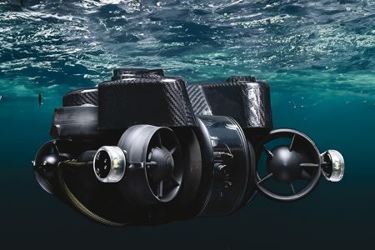Tackling The Water Crisis
By Terrilynn Short

It’s a sobering fact that global freshwater demand could outstrip supply by more than 50% by 2030.
Despite this, more than 158 million cubic feet (45 million cubic meters) of water are still lost around the world each day through leakage. To put that in context, that’s the same as losing 12,000 Olympic-size swimming pools of drinking water each day.
The World Bank estimates that the annual cost to water companies of water lost before reaching the tap is around $14 billion. This cost only increases when you include water wasted after reaching the customer.
Today’s infrastructure is no longer fit for purpose. Almost half of the water lost globally is in the United States. Every day the U.S. loses 6 billion gallons of treated water due to tiny pinpoint-size leaks in pipes that go undetected. These leaks are costing the U.S. water industry, and its customers, billions of dollars each year. With water use in the U.S. increasing, many regions are starting to feel the pressure. This rising demand, combined with an aging water infrastructure, is putting the system under severe strain.
The good news is technology can play a critical role in conserving freshwater while also preventing pollution caused by wastewater overflows. Halma’s companies are committed to addressing water pollution and conservation.
Listening For Leaks
Water companies at Halma, like Fluid Conservation Systems (FCS), part of HWM, make environmental monitoring technologies that can support aging networks, saving billions of gallons every year.
FCS’s technology works using sensors placed on a water network that pick up the smallest sounds made by water leaks. As soon as the tell-tale noise of a water leak is detected — similar to the sound of a flute — the sensor converts it into a digital signal and alerts an operator.
From there, operators access a digital map of all possible water leaks on a network, helping them to prioritize what needs to be fixed rather than spending time sending engineers to every alert to ensure limited resources are deployed most effectively.
Predicting Sewer Network Blockages
To monitor and analyze sewer levels, HWM created SpillSens and RadarSens. These intelligent sensors use orientation technology similar to a smartphone or radar, depending on the application. Any unexpected change in level due to flooding or blockage will alert an operator before untreated sewage is discharged or pollutes natural bodies of water.
Extending The Life Of Sewer Systems
Overcrowded cities, heavy downpours, and climate change are all putting increasing pressure on wastewater infrastructure. Technology not only helps to prevent wastewater pollution, but it can also maximize efficiency and safety when repairing pipes while avoiding the need for disruptive and expensive excavation.
Several of Halma’s companies provide technologies that help to extend the life of sewer systems. For example, Minicam’s robots are placed into pipes, and are then remote-controlled through the network to identify any damage or blockages which need clearing. Its partner VAPAR analyzes datasets of pipe footage, using its artificial intelligence (AI) to prioritize and recommend which pipes need repair.
Pipe Trekker crawlers from Halma company Deep Trekker are battery-operated and are able to navigate in underground pipes for up to eight hours. High-definition camera systems attached to these robots enable teams to inspect pipes remotely rather than sending humans underground, saving time and reducing risk.
Sewertronics specializes in repairing wastewater pipes without the need to dig a trench. Using its patented ultraviolet (UV) LED technology, it can insert a new lining into a pipe and then seal it in place, fixing leaks and preventing pollution.
Dancutter’s flexible robotic cutting technology is used after the repair has been completed, re-opening access to branches in the pipe that may have been sealed over.
Maintaining Critical Water Infrastructure
Deep Trekker uses submersible robots to monitor and maintain critical water infrastructure, such as water tanks. Typically, when inspecting or cleaning a water tank, operators are required to drain a tank completely, wasting water and taking it offline for days. In some cases, divers are used to inspect tanks, which can be unsafe for the diver, as well as posing contamination risks.
Deep Trekker’s remote-controlled robots are designed to enter confined spaces and help improve the safety, cost, and speed of water tank inspection and cleanings. These remotely operated vehicles (ROVs) carry out pipe inspections necessary to ensure the availability of safe water as cracks and corrosion can potentially impact the pipes.
Investment in aging water infrastructure is urgently needed to meet future demand and to protect the environment from pollution. Heavier downpours due to a changing climate is only putting more pressure on a creaking system. According to Water Europe, the cost of inaction could exceed the investment required by five times.
By using smarter water technology, we can start to tackle the issue of aging water infrastructure.

